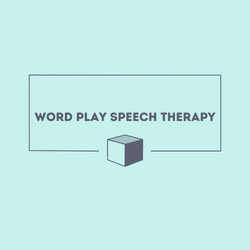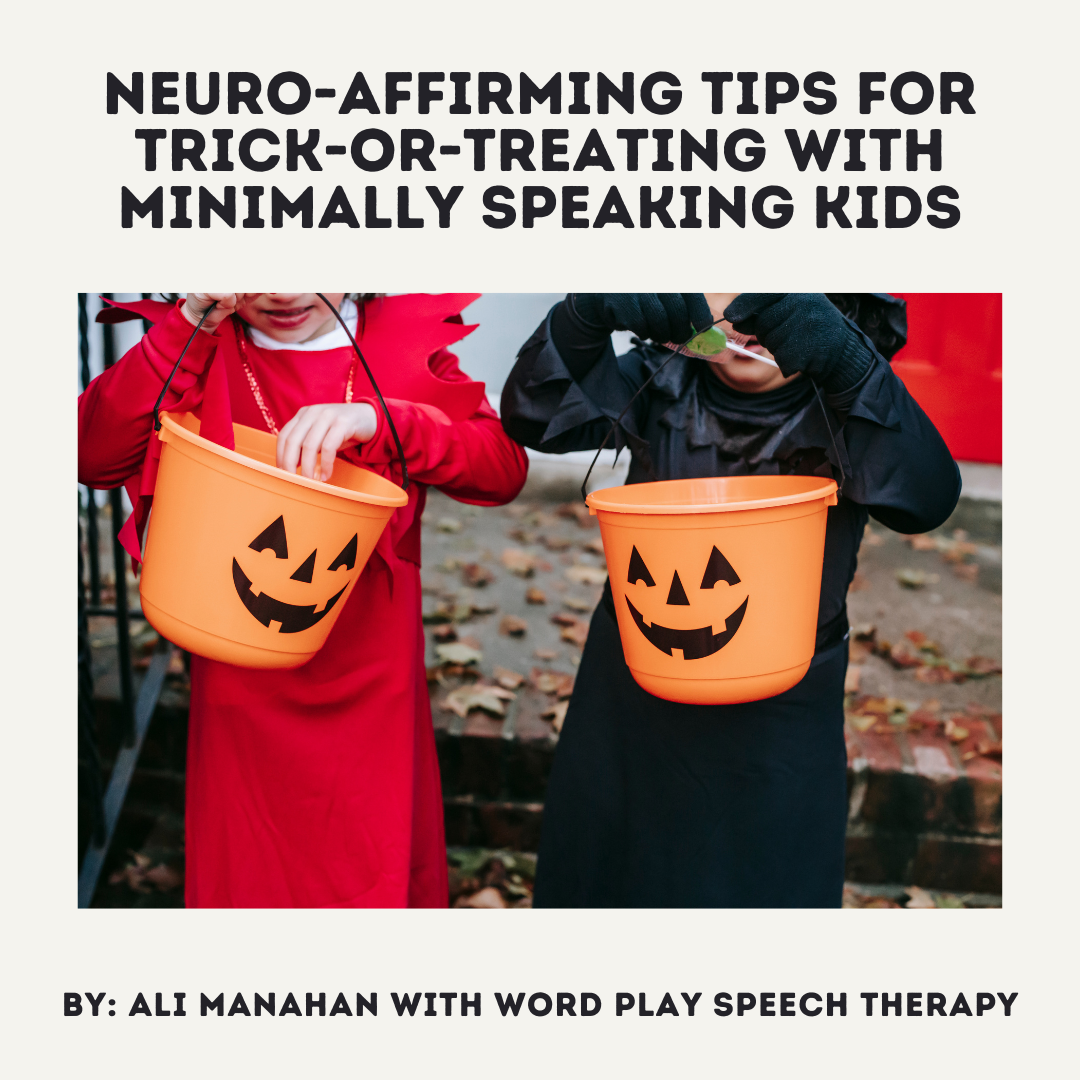Halloween is a time for costumes, creativity, and community. For many families, it’s also an opportunity to celebrate self-expression and connection. For children who are minimally speaking or use Augmentative and Alternative Communication (AAC), trick-or-treating can bring unique challenges while also creating beautiful opportunities for inclusion.
1. Remember: Communication Comes in Many Forms
Trick-or-treating isn’t just about saying “Trick or Treat!” It’s about participating, connecting, and being part of the fun. A child doesn’t need to use spoken words to communicate excitement or gratitude. Gestures, signs, AAC devices, or even a simple smile are all valid ways of joining in.
Encourage your child to express themselves in the way that feels most comfortable to them, whether that’s pressing a button on their speech device, signing “thank you,” or holding up a card that says “Trick or Treat!” Every form of communication is communication.
2. Use AAC to Prepare and Participate
If your child uses an AAC system (like TouchChat, Proloquo2Go, LAMP Words for Life, or a communication board), Halloween is a great time to model language and build participation.
Here are a few AAC ideas for the night:
-
Add a Halloween page or folder to your child's device with key vocabulary: trick or treat, thank you, pumpkin, candy, spooky, costume, go home, tired, fun, scared, want more.
-
Pre-program simple phrases like “Trick or Treat!” and “Happy Halloween!” into your child's device. This is especially great for gestalt language processors!
-
Model language throughout the night. For example, say, “You pressed ‘candy’—yes, I see lots of candy!” or “I heard you say ‘go’—let’s go to the next house!”
-
Bring low-tech backups. If it’s dark or noisy, laminated cards or a printed core board can be a great way to communicate quickly.
Halloween can be a great time to show others how amazing your child's voice is.
3. Practice Ahead of Time
Doing a few “practice rounds” can help reduce anxiety and increase confidence. Try walking through the steps at home or with dolls and a dollhouse:
-
Knock or ring the doorbell.
-
Hold out your bucket.
-
Use your AAC or gesture for “Trick or Treat.”
-
Say or show “Thank you.”
See a video of how we practice trick-or-treating in speech therapy here.
You can even practice with familiar neighbors or family members before the big night. Make it playful, not pressured. The goal is comfort and joy not perfection.
4. Advocate Through Awareness
Consider passing out small cards to people who ask about your child's AAC device. This helps others learn about AAC without you having to explain repeatedly throughout the evening. 
5. Follow Your Child’s Lead
Halloween doesn’t have to look a certain way. If your child prefers to visit just a few houses, help hand out candy, or simply walk around and look at decorations, that’s perfectly okay. What matters is that they feel included, respected, and supported.
Some kids might find costumes itchy, masks uncomfortable, or loud decorations overwhelming. Choose comfort over “tradition”, if your child wants to wear a pumpkin t-shirt instead of a costume, that's okay!
6. Celebrate Every Success
Whether your child uses a new word on their AAC device, bravely approaches a neighbor’s door, or simply enjoys the sights and sounds, celebrate those moments. Boost your child's confidence by rewarding the effort!
Final Thought
Every child deserves to feel included in the magic of Halloween. When we slow down, presume competence, and create communication-friendly environments, we open the door (literally and figuratively) for meaningful participation.
So this year, as your child sets out with their pumpkin bucket and sparkling eyes, remember that their voice, in whatever form it takes, is something worth celebrating.
Happy Halloween from all of us at Word Play Speech Therapy!

